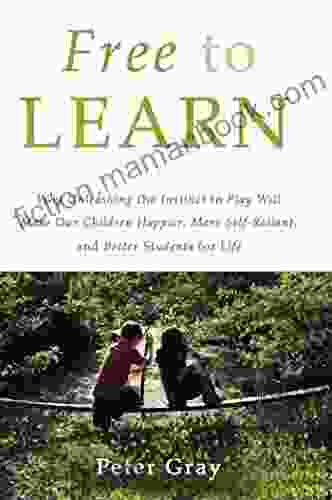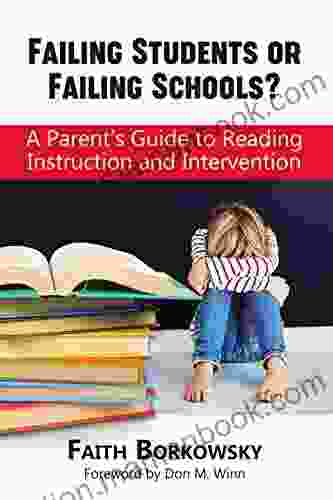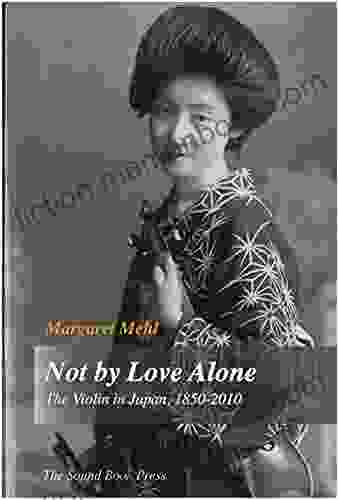Not By Love Alone: The Violin in Japan, 1850-2024: A Comprehensive Exploration of the Impact of the Violin on Japanese Culture and Society

The violin, a Western musical instrument, has had a profound impact on Japanese culture and society since its to the country in the mid-19th century. This article provides a comprehensive exploration of the impact of the violin on Japan, examining its , assimilation into Japanese musical traditions, and role in shaping Japanese musical identity. The article also discusses the impact of the violin on Japanese education, popular culture, and the development of a distinct Japanese violin-making tradition.
5 out of 5
| Language | : | English |
| File size | : | 4009 KB |
| Text-to-Speech | : | Enabled |
| Enhanced typesetting | : | Enabled |
| Word Wise | : | Enabled |
| Print length | : | 664 pages |
| Screen Reader | : | Supported |
of the Violin to Japan
The violin was first introduced to Japan in the 1850s by Western missionaries and traders. Initially, the instrument was met with curiosity and skepticism, as it was unfamiliar to Japanese ears and musical traditions. However, as Japan began to modernize and Westernize in the late 19th century, the violin gradually gained popularity among Japanese musicians and audiences.
One of the key figures in the and assimilation of the violin into Japanese music was Kume Kunitake (1819-1891),a scholar and musician who studied in Europe and introduced Western musical instruments and techniques to Japan. Kume established a music school in Tokyo in 1879, where he taught the violin and other Western instruments to Japanese students.
Assimilation into Japanese Musical Traditions
As the violin became more popular in Japan, it began to be assimilated into Japanese musical traditions. Japanese musicians experimented with different ways of playing the violin, adapting it to the unique characteristics of Japanese music. This led to the development of a distinct Japanese style of violin playing, which incorporated elements of traditional Japanese music such as the use of slides, glissandi, and harmonics.
The violin also began to be incorporated into traditional Japanese musical genres such as gagaku (court music) and kabuki (musical theater). In gagaku, the violin was used to add a new layer of texture and complexity to the ensemble, while in kabuki, it was used to create dramatic effects and enhance the emotional impact of the performance.
Role in Shaping Japanese Musical Identity
The violin has played a significant role in shaping Japanese musical identity. It has become an integral part of Japanese classical music, and is also widely used in popular music genres such as jazz, rock, and pop. Japanese violinists have achieved international acclaim, and the country has produced a number of world-renowned violin makers.
The violin has also had a significant impact on Japanese education. It is a required instrument in many Japanese schools, and is taught from a young age. This has contributed to the development of a high level of musical literacy and appreciation in Japan.
Impact on Japanese Popular Culture
The violin has also had a significant impact on Japanese popular culture. It is a popular instrument in anime, manga, and video games, and is often used to create emotional or dramatic effects. The violin has also been featured in a number of Japanese films and television shows.
One of the most famous examples of the violin's impact on Japanese popular culture is the anime series "Your Lie in April." The series follows the story of a young pianist who gives up playing after the death of his mother. However, he is inspired to return to music after meeting a violinist who teaches him the importance of playing with passion and emotion.
Development of a Japanese Violin-Making Tradition
In addition to its impact on Japanese music and culture, the violin has also led to the development of a distinct Japanese violin-making tradition. Japanese violin makers have developed their own unique techniques and designs, which are often based on traditional Japanese craftsmanship. Japanese violins are known for their beauty and quality, and are prized by musicians around the world.
One of the most famous Japanese violin makers is Ikuo Takasaki (1917-2010). Takasaki was a self-taught violin maker who developed his own unique techniques based on the principles of traditional Japanese craftsmanship. His violins are known for their exceptional sound quality and beauty.
The violin has had a profound impact on Japanese culture and society since its to the country in the mid-19th century. It has been assimilated into Japanese musical traditions, shaped Japanese musical identity, and had a significant impact on Japanese education, popular culture, and the development of a distinct Japanese violin-making tradition. The violin continues to be an important part of Japanese musical life today, and its legacy is likely to continue for many years to come.
References
- Kume, K. (1879). The of Western Music into Japan. Tokyo: Meiji Printing Office.
- Malm, W. P. (1959). Japanese Music and Musical Instruments. Rutland, VT: Charles E. Tuttle.
5 out of 5
| Language | : | English |
| File size | : | 4009 KB |
| Text-to-Speech | : | Enabled |
| Enhanced typesetting | : | Enabled |
| Word Wise | : | Enabled |
| Print length | : | 664 pages |
| Screen Reader | : | Supported |
Do you want to contribute by writing guest posts on this blog?
Please contact us and send us a resume of previous articles that you have written.
 Top Book
Top Book Novel
Novel Fiction
Fiction Nonfiction
Nonfiction Literature
Literature Paperback
Paperback Hardcover
Hardcover E-book
E-book Audiobook
Audiobook Bestseller
Bestseller Classic
Classic Mystery
Mystery Thriller
Thriller Romance
Romance Fantasy
Fantasy Science Fiction
Science Fiction Biography
Biography Memoir
Memoir Autobiography
Autobiography Poetry
Poetry Drama
Drama Historical Fiction
Historical Fiction Self-help
Self-help Young Adult
Young Adult Childrens Books
Childrens Books Graphic Novel
Graphic Novel Anthology
Anthology Series
Series Encyclopedia
Encyclopedia Reference
Reference Guidebook
Guidebook Textbook
Textbook Workbook
Workbook Journal
Journal Diary
Diary Manuscript
Manuscript Folio
Folio Pulp Fiction
Pulp Fiction Short Stories
Short Stories Fairy Tales
Fairy Tales Fables
Fables Mythology
Mythology Philosophy
Philosophy Religion
Religion Spirituality
Spirituality Essays
Essays Critique
Critique Commentary
Commentary Glossary
Glossary Bibliography
Bibliography Index
Index Table of Contents
Table of Contents Preface
Preface Introduction
Introduction Foreword
Foreword Afterword
Afterword Appendices
Appendices Annotations
Annotations Footnotes
Footnotes Epilogue
Epilogue Prologue
Prologue Howard Blum
Howard Blum Kimberly Denney
Kimberly Denney Caroline Giles Banks
Caroline Giles Banks Lisa M Schab
Lisa M Schab Theresa Smith
Theresa Smith Susan C Pinsky
Susan C Pinsky Cat Johnson
Cat Johnson Penelope Lively
Penelope Lively S P Grogan
S P Grogan Jamie A Waters
Jamie A Waters Sang Kromah
Sang Kromah Louis Begley
Louis Begley William Kerrigan
William Kerrigan Elizabeth Camden
Elizabeth Camden Deborah Brown
Deborah Brown Hamish Coates
Hamish Coates Carrie Morey
Carrie Morey David Shapiro
David Shapiro Ryan Watkins
Ryan Watkins Diane Von Furstenberg
Diane Von Furstenberg
Light bulbAdvertise smarter! Our strategic ad space ensures maximum exposure. Reserve your spot today!

 Dave SimmonsThe Art of Making the Play: A Comprehensive Guide to Perfecting Your Writing...
Dave SimmonsThe Art of Making the Play: A Comprehensive Guide to Perfecting Your Writing...
 Bernard PowellA Comprehensive Exploration of Beethoven's Piano Sonata No. 12 in F Minor,...
Bernard PowellA Comprehensive Exploration of Beethoven's Piano Sonata No. 12 in F Minor,... Dawson ReedFollow ·4.5k
Dawson ReedFollow ·4.5k Fernando PessoaFollow ·7.6k
Fernando PessoaFollow ·7.6k Eric NelsonFollow ·2.1k
Eric NelsonFollow ·2.1k Dean ButlerFollow ·17.6k
Dean ButlerFollow ·17.6k Kyle PowellFollow ·6.9k
Kyle PowellFollow ·6.9k Vic ParkerFollow ·8.1k
Vic ParkerFollow ·8.1k Avery SimmonsFollow ·6.7k
Avery SimmonsFollow ·6.7k Junichiro TanizakiFollow ·5.3k
Junichiro TanizakiFollow ·5.3k

 Abe Mitchell
Abe MitchellWhy Unleashing the Instinct to Play Will Make Our...
Play is an essential part of childhood. It is...

 Rubén Darío
Rubén DaríoTheory in Health Promotion Research and Practice
Theory is essential...

 Howard Blair
Howard BlairFailing Students or Failing Schools: Uncovering the Root...
In the United States, the issue of failing...

 Ira Cox
Ira CoxPoetry From the Heart Chope: A Symphony of Soul and Verse
Embark on a literary...

 Easton Powell
Easton PowellThe Witch Hunt: Wicked Witches of Shadow Woods
In the cursed woods of...
5 out of 5
| Language | : | English |
| File size | : | 4009 KB |
| Text-to-Speech | : | Enabled |
| Enhanced typesetting | : | Enabled |
| Word Wise | : | Enabled |
| Print length | : | 664 pages |
| Screen Reader | : | Supported |










